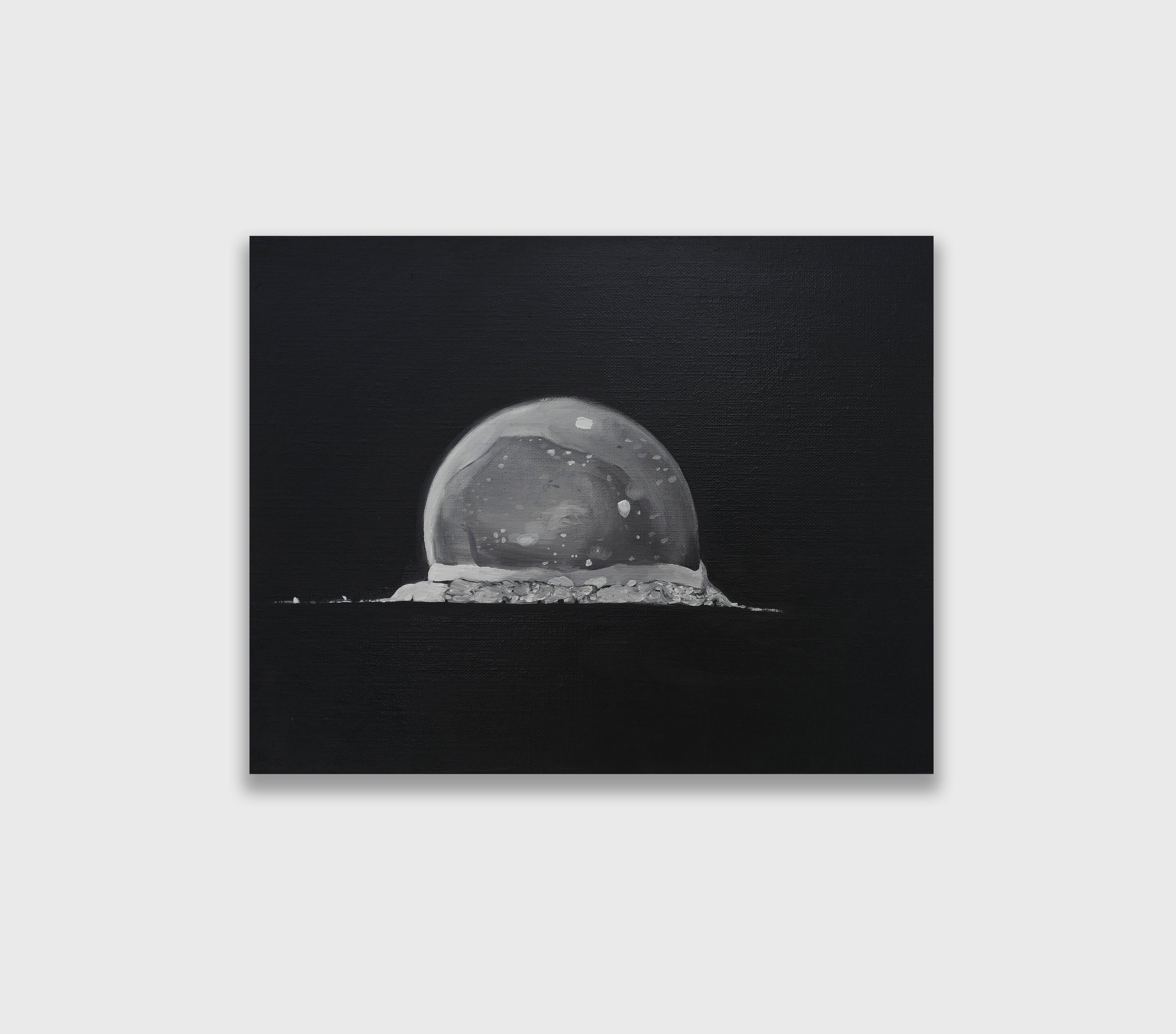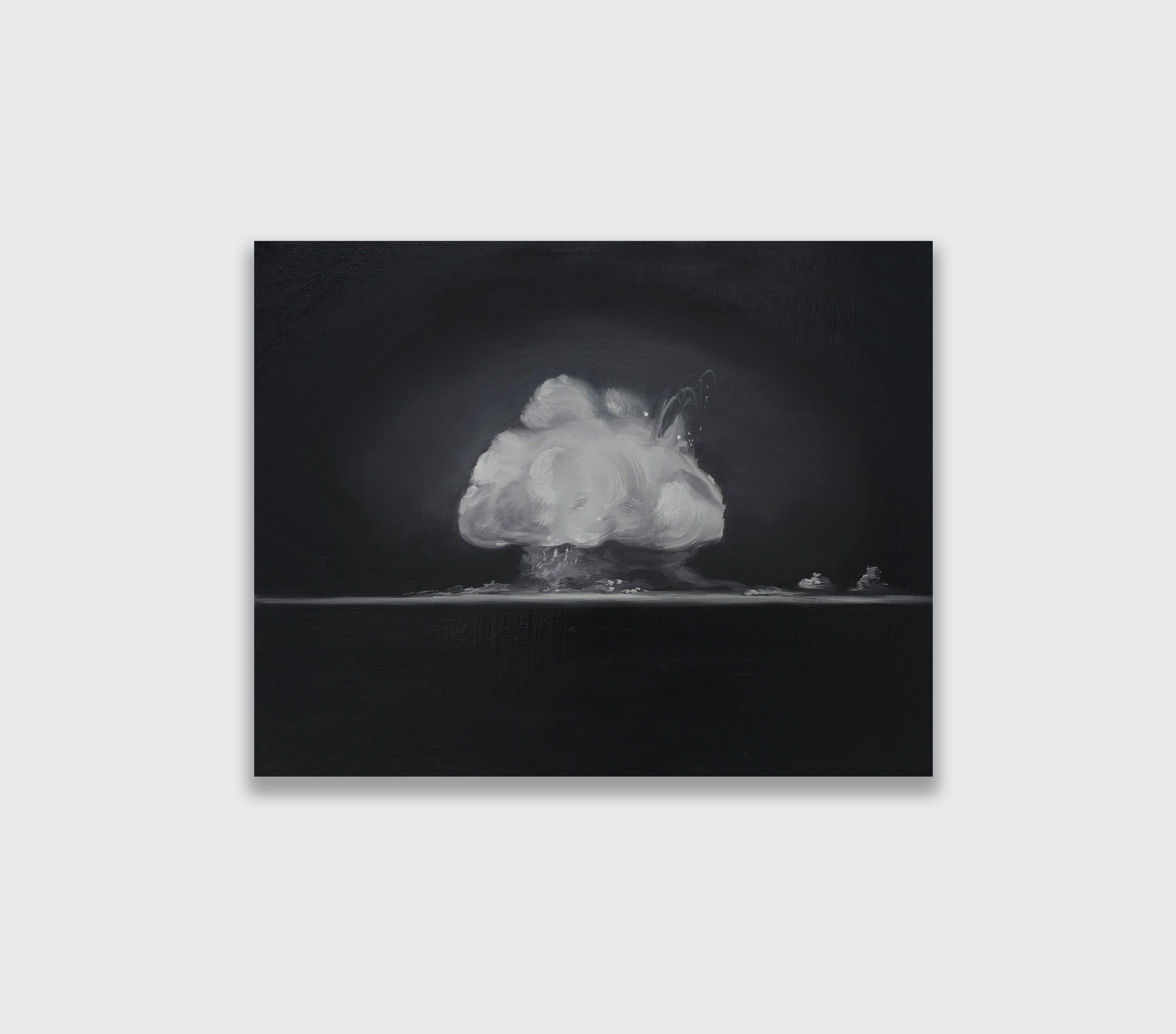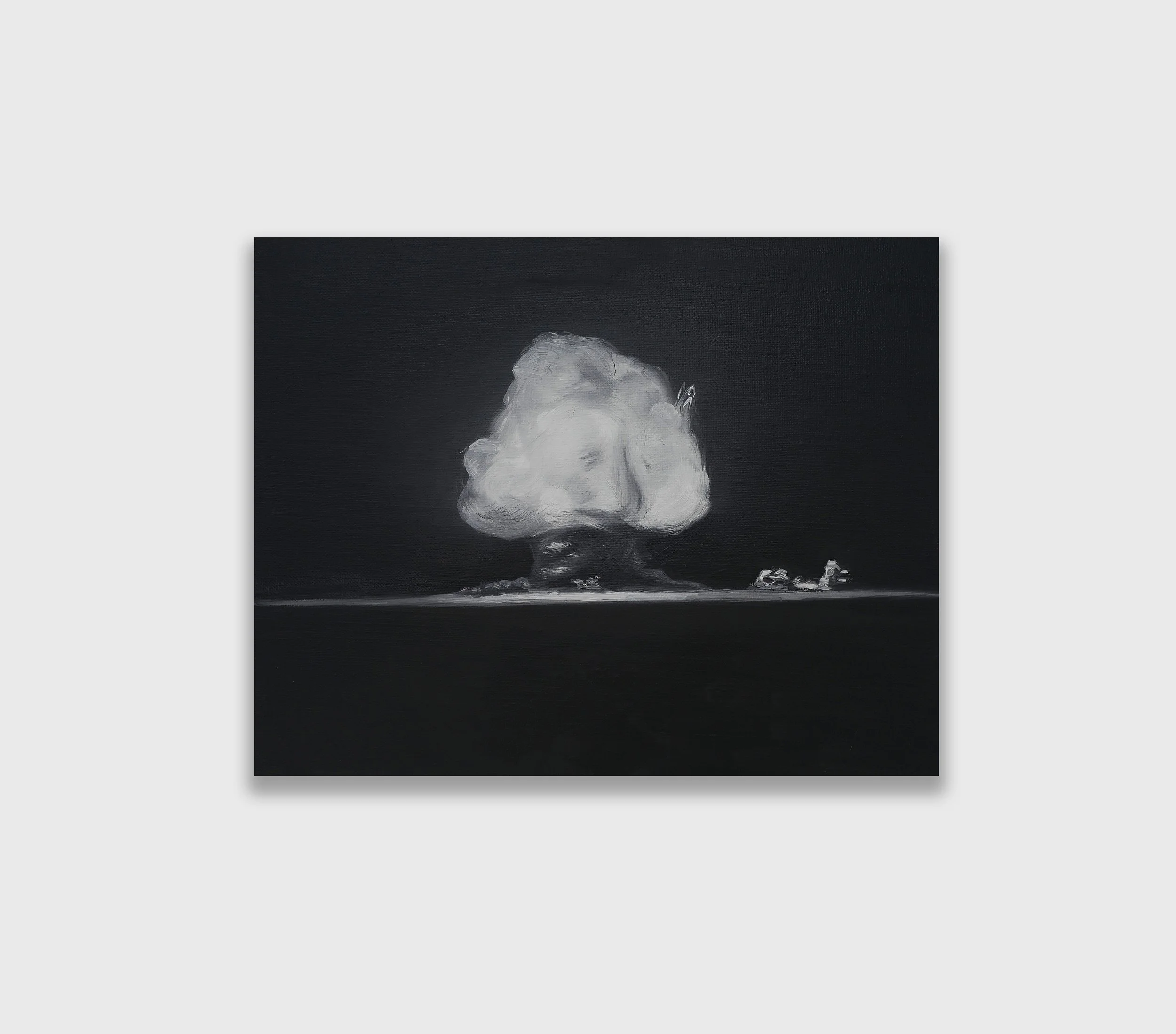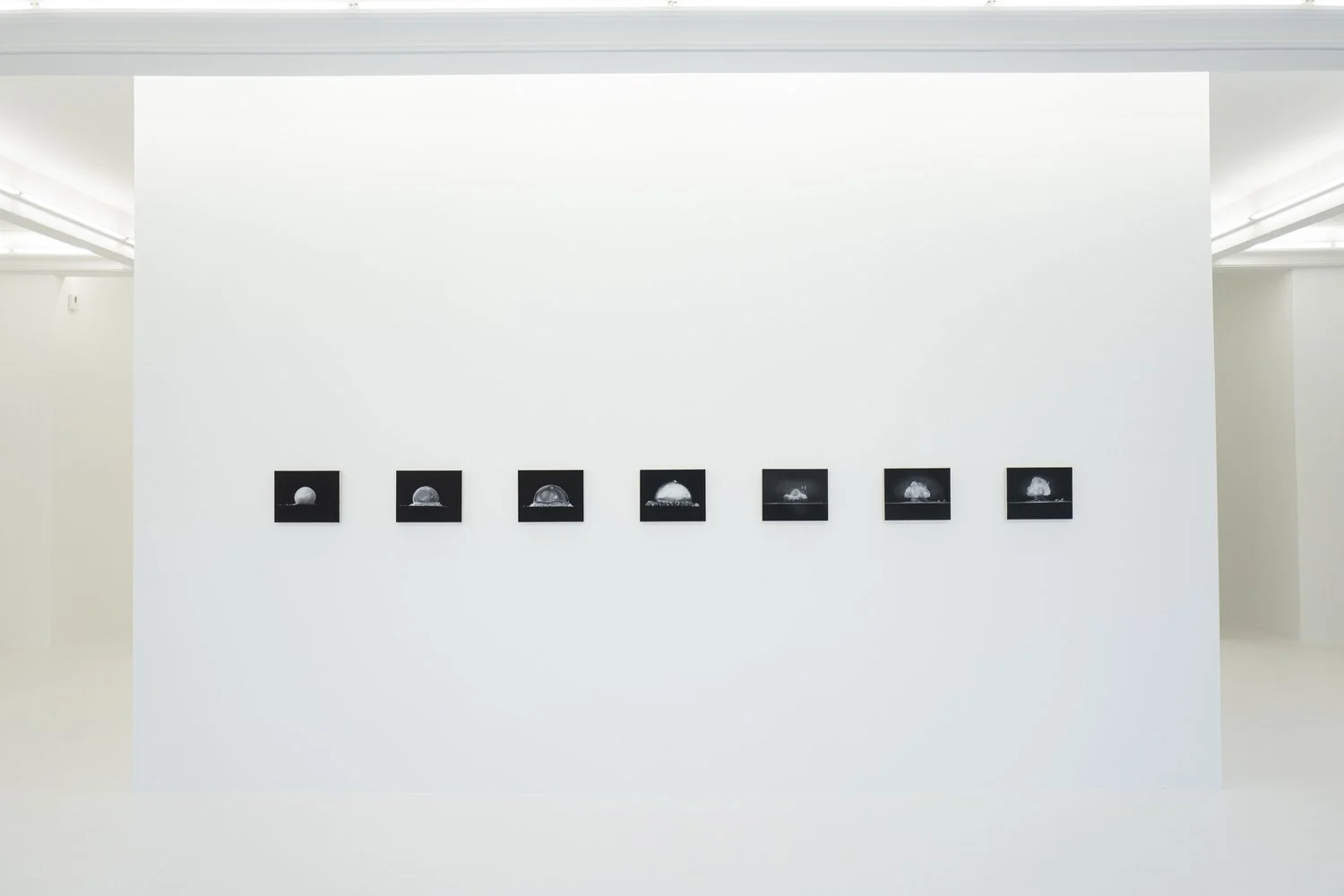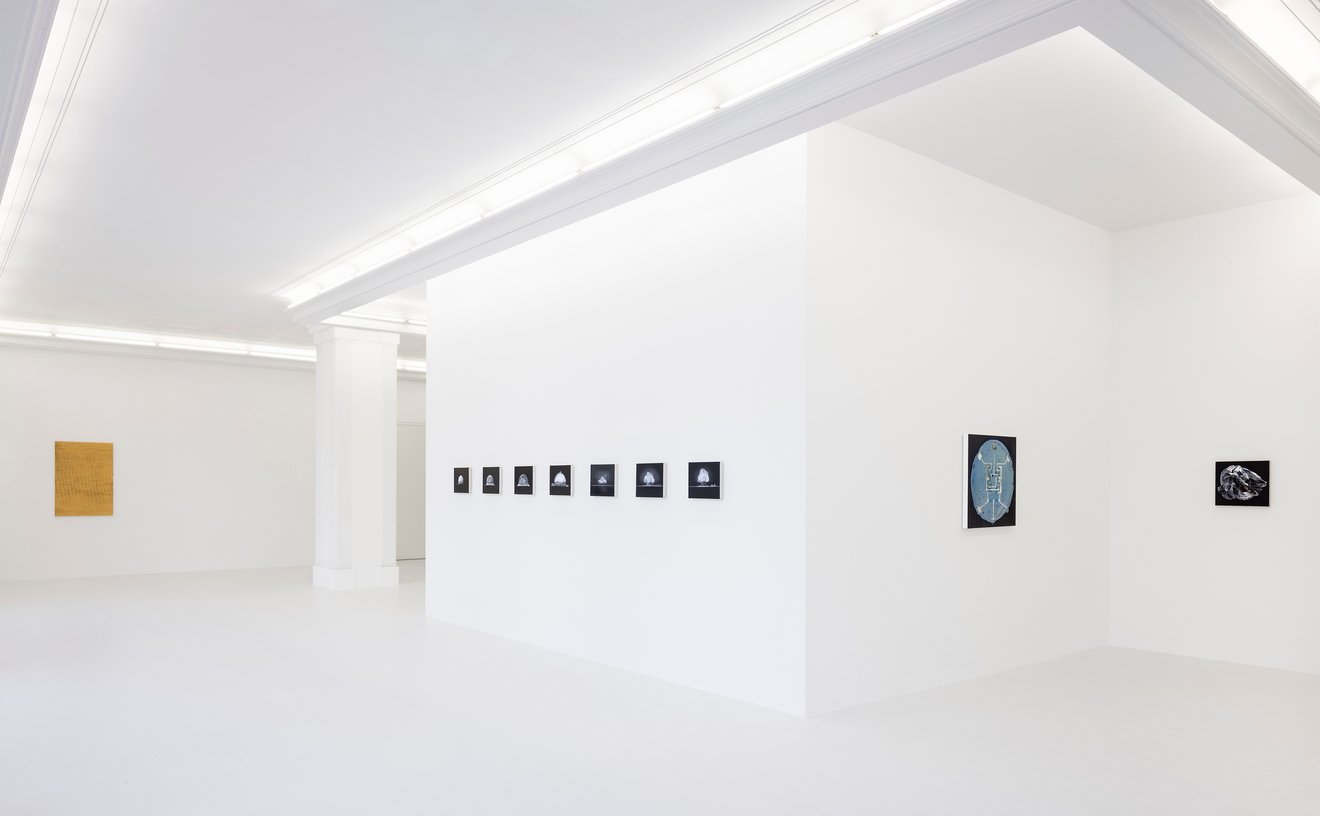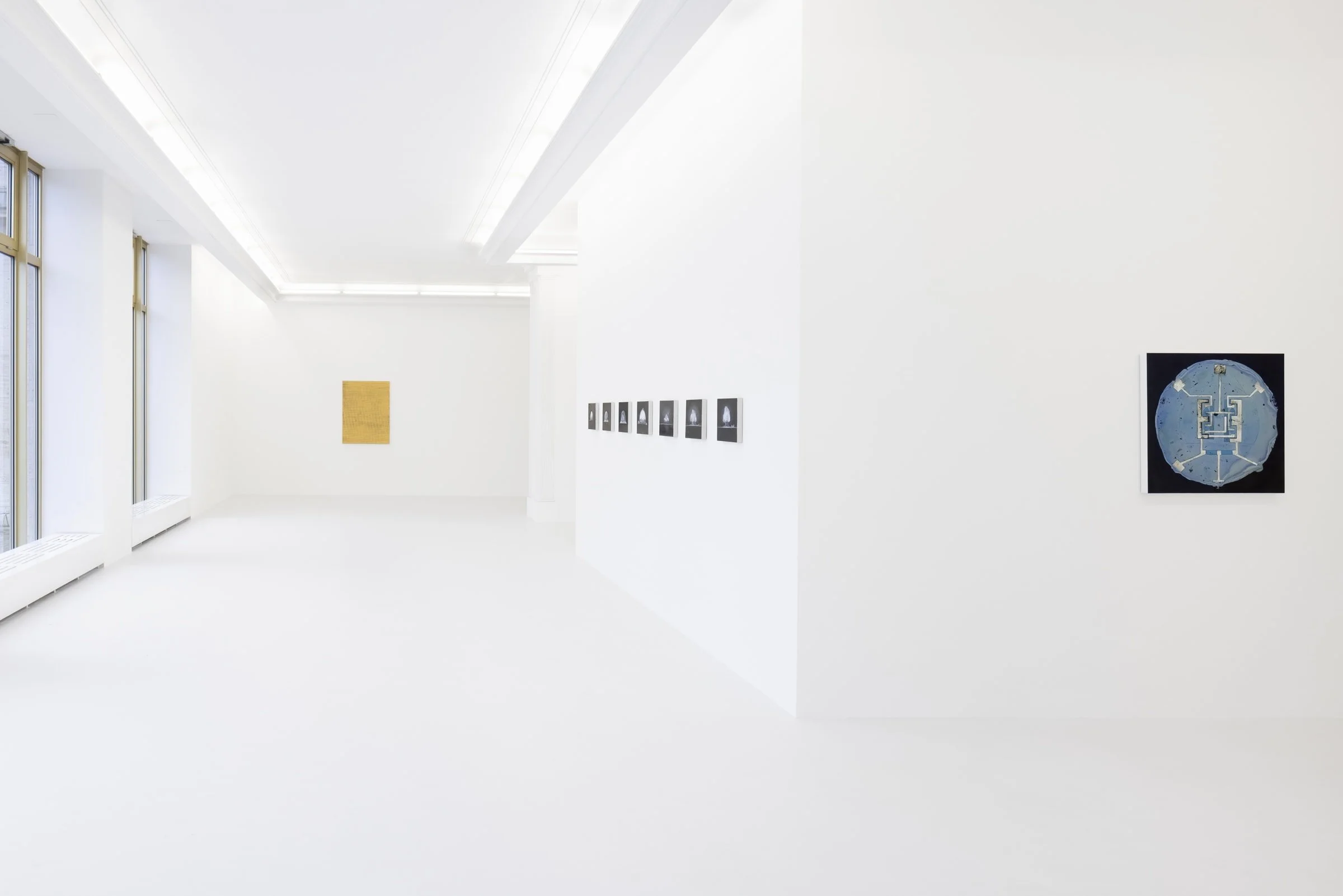TRINITY TESTING, 2020
TRINITY TESTING, 2020
Oil on linen
In 7 parts, each: 28 x 36 cm (11 x 14 in)
Overall: 28 x 252 cm (11 x 98 in)
The deafening explosion of the Trinity test in New Mexico in 1945 marked the arrival of the Atomic Age, forever altering the course of history. Nuclear weapons—celebrated, feared, coveted, and condemned—have since become one of the most potent symbols of power and destruction. In TRINITY TESTING (2020), Tan Mu explores this pivotal event through a series of delicate, dreamlike paintings (28 × 36 cm each), contrasting the enormity of nuclear force with the fleeting nature of the moment in which it unfolds. Tan Mu’s fascination with the instant of explosion—the precise moment when immense energy is unleashed—mirrors her broader interest in the defining moments of human progress. The nucleus, a symbol of ultimate efficiency, enables a high-speed fission process that culminates in a single, transformative event. Yet, this instant gives rise to infinite ethical, regulatory, and environmental dilemmas, reshaping world order in ways that are both unstable and inescapable. By capturing the paradox of immense destruction and fragile impermanence, TRINITY TESTING compels us to confront the vulnerabilities of our time, reflecting on the forces that shape both our history and our future.
DAWN, September 9 – October 7, 2022, Peres Projects, Berlin
DAWN, September 9 – October 7, 2022, Peres Projects, Berlin
DAWN, September 9 – October 7, 2022, Peres Projects, Berlin
Q: Why did you choose nuclear explosions as the core visual symbol for your work?
Tan Mu: Looking at modern history, I believe the most significant development in the past century is the advent of nuclear power, computers, and new systems for transmitting goods and information. These breakthroughs mark a shift to a new level of impact, which I felt was crucial to document. The nuclear explosion is the ultimate metaphor for energy release; it represents humanity’s breakthrough beyond physical limitations—a moment of creation, yet it also embodies the duality of destruction and rebirth. I reviewed extensive historical footage of nuclear tests, attempting to capture the sequence from energy accumulation to its release. I’m particularly fascinated by the instantaneous burst of such immense energy, whether man-made or natural. It’s like how I depict underwater volcanic eruptions and disruptions in underwater cables in my Eruption series—these moments of explosion and rupture create new orders and unknowns. This underlying theme runs through my work.
Q: What is the deeper connection between the monochrome palette and the imagery of “vibration” in your work?
Tan Mu: Stripping away color helps dissolve the sensory familiarity of the real world. When rendered in black and white, our familiar surroundings suddenly feel unfamiliar, and even what we thought we knew becomes part of a different system. This forces the viewer to reinterpret things from a new perspective. At this point, the mushroom cloud no longer merely symbolizes an explosion but transforms into a visual equivalent of vibrational frequencies. I’ve always been intrigued by oscillations or vibrations. In historical records, nuclear explosions are described not only by their visual impact but also by the immense vibrational energy that accompanies them. These vibrations carry hidden information. This connects to my Signal series and my research into electronic music, where I explore the concept of sound waves. Whether it’s the shockwave of a nuclear blast, the tremor of a volcano, the oscillation of data signals, or the frequency of electronic music, they all represent the physical manifestation of energy surpassing a threshold. These works explore the relationship between visuals and vibration.
Q: How do you reconstruct the perception of time through your creative process?
Tan Mu: Reflecting on the seven small paintings, I recall spending about ten days in total to complete them. I immersed myself fully in the process, without any distractions. So, essentially, each piece took a day to complete, and the entire series took about a week or more. During each painting session, I concentrated solely on the specific image, focusing on a single moment—the instant when immense energy was released. I wanted to capture the energy of that moment, with each painting representing a fraction of time, transforming it into a visual record. It felt as though I was trying to stretch time, to enter that instant, to fully explore its impact. What was particularly unique about this process was how it echoed the concept of creation itself. It was as if every day I was creating something new, almost like a time experiment. I spent ten hours each day, carefully constructing a freeze-frame of that 0.01-second moment, like sealing it in a time capsule. In the broader historical context, these fleeting seconds led to profound changes. While we experience countless brief moments every day, these few seconds brought about monumental shifts. This "slow-motion dissection" disrupts the linear logic of time—when I layer paint on the canvas, that decisive second in history is infinitely extended, revealing the complex texture of energy transformation.
Q: How is the tension between “control” and “loss of control” presented in the series?
Tan Mu: The precise control of the canvas size creates a subtle counterpoint to the uncontrollability of the energy explosion. I treat the mushroom cloud of the nuclear explosion as if it were a calm, intricate object, but the unpredictability of the paint’s flow undermines this order. This contradiction mirrors humanity’s attempts to tame nuclear energy—while we use computer models to predict chain reactions, we remain fearful of the variables outside the algorithms. Each painting represents a temporary balance between control and loss of control. Behind every serene image lies a massive crisis or the emergence of new energy.



